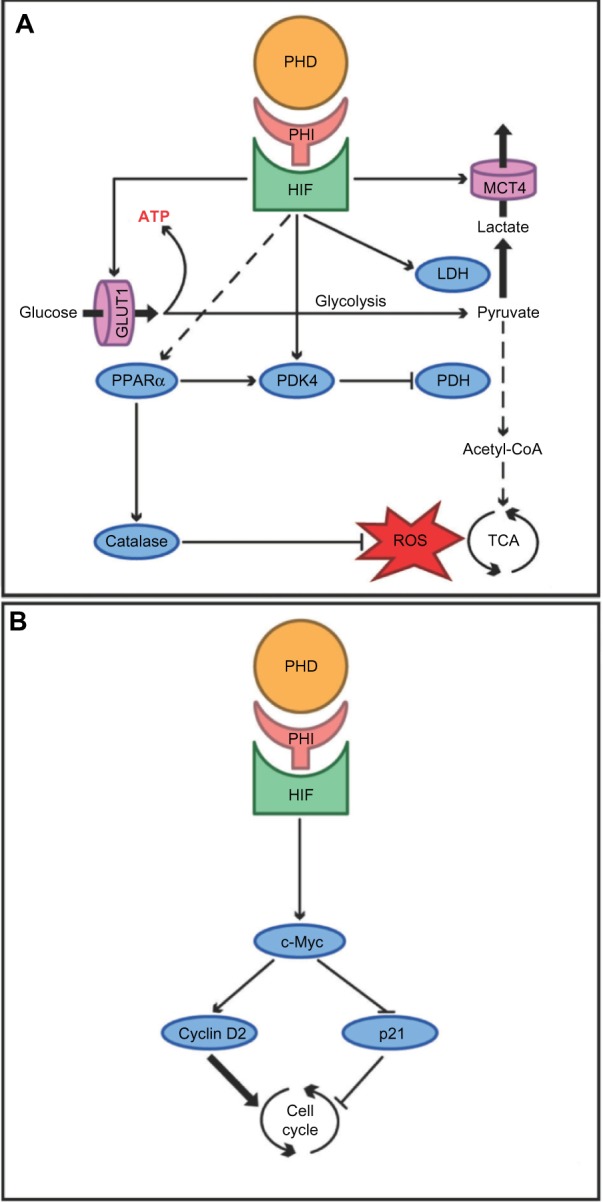Figure 1.

The putative effects of prolyl hydroxylase domain-containing enzyme inhibitors (PHI) in the liver.
Notes: (A) In liver ischemia and reperfusion PHI stabilize hypoxia-inducible factor (HIF), thus inducing a shift of glucose metabolism from oxidative to more anaerobic adenosine triphosphate (ATP) production, and leading to reduced mitochondrial oxidative stress involving the master regulator of energy metabolism, peroxisome proliferator-activated receptor alpha (PPARα), as well as catalase, pyruvate dehydrogenase kinase 4 (PDK4), and lactate dehydrogenase (LDH). While catalase detoxifies reactive oxygen species (ROS), PDK4 inactivates pyruvate dehydrogenase (PDH), reducing the conversion of pyruvate to acetyl-CoA. LDH catalyzes the conversion of accumulated pyruvate to lactate. Further, direct effects of HIF comprise increased glucose uptake via glucose transporter 1 (GLUT1) and lactate clearance via monocarboxylate transporter (MCT) 4. (B) PHI may enhance liver regeneration via increased hepatocyte proliferation, which is induced by enhanced expression of the cell-cycle promoter cyclin D2 and decreased expression of the cell-cycle inhibitor p21 in a c-Myc-dependent fashion.
Abbreviations: Acetyl-CoA, acetyl coenzyme A; TCA, tricarboxylic acid.
